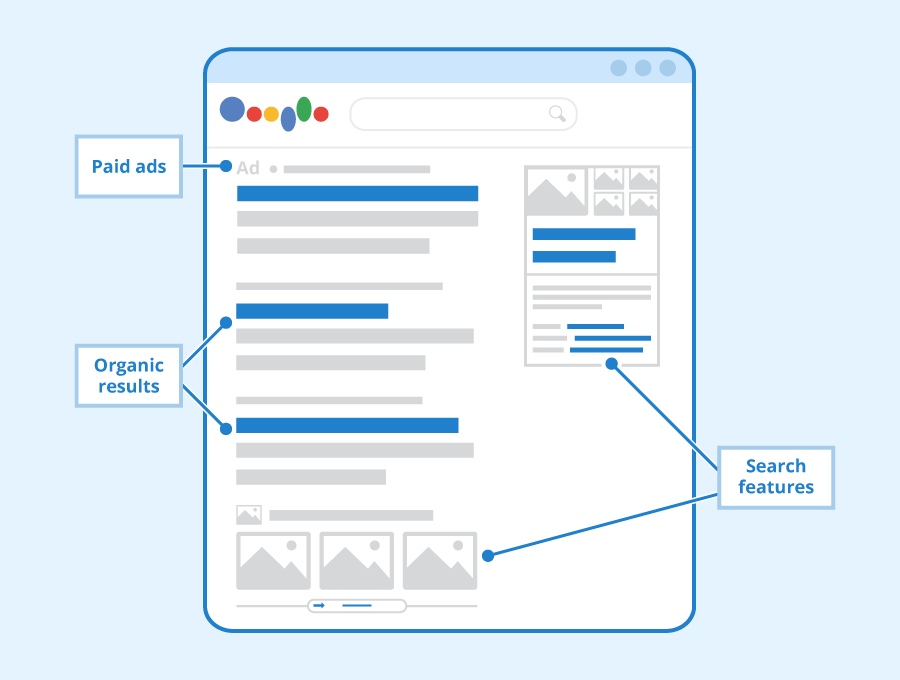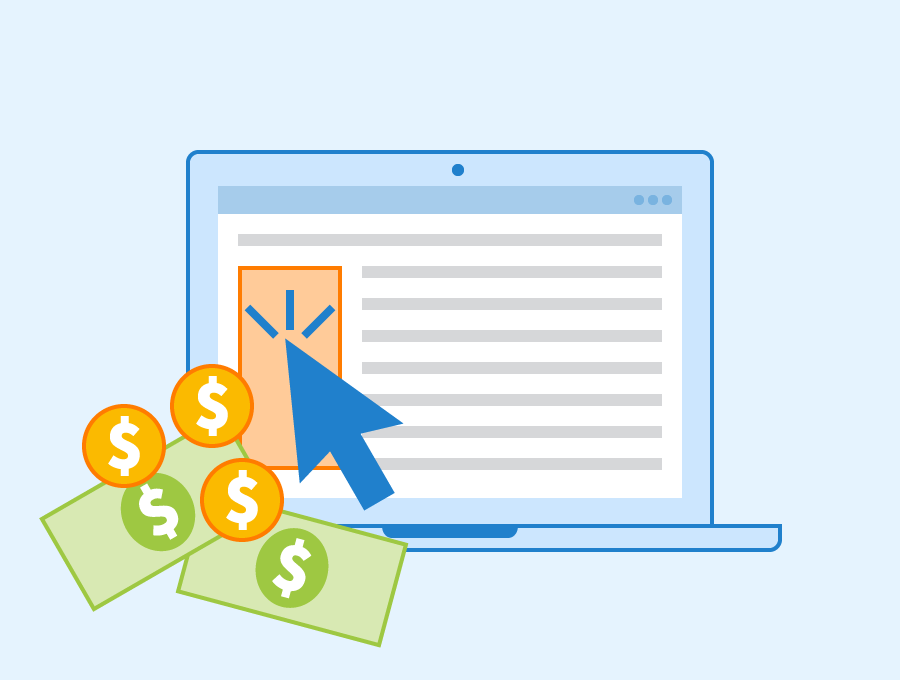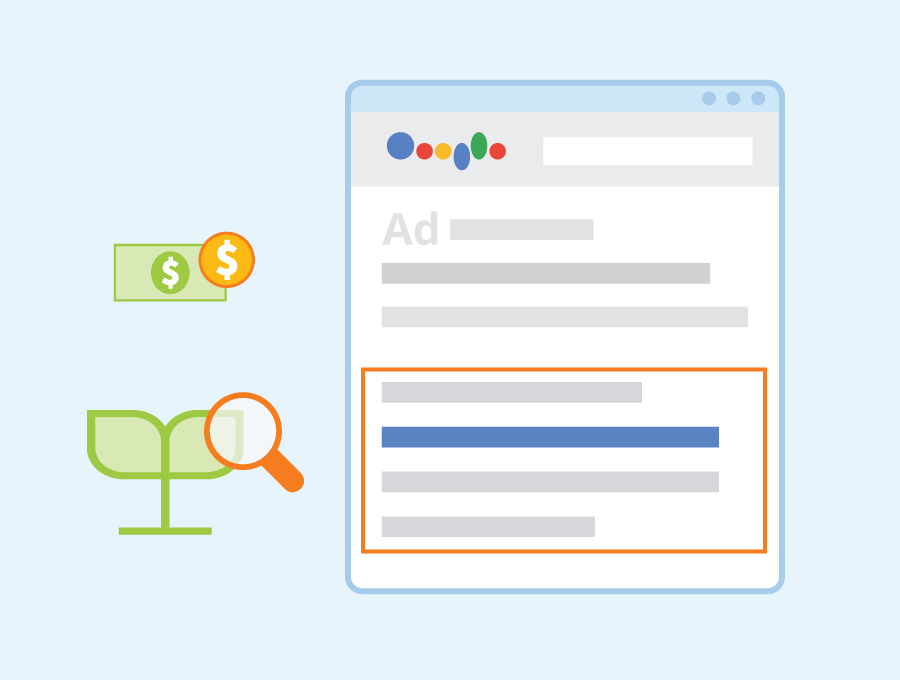In the current era of rapid digital development, Digital Marketing has become an indispensable part of business strategy. In this field, “Paid Search” – also known as paid Advertising on search platforms – has emerged as an important tool, helping businesses build their brands and interact with target customers effectively.
Paid search has revolutionized the way businesses approach digital marketing. By paying to appear in search engine results, companies can ensure their products and services are visible to those actively seeking them. With the right strategy, paid search can drive targeted traffic, enhance brand visibility, and generate significant ROI. This article will explore every facet of paid search, from its inception to its future, offering valuable insights for businesses of all sizes.
What is the Definition of Paid Search?
Paid search, commonly referred to as Pay-Per-Click (PPC) advertising, is a digital marketing strategy where advertisers pay a fee each time their ad is clicked. Essentially, it’s a way of buying visits to your site rather than earning them organically. This method allows businesses to bid for ad placement in a search engine’s sponsored links when someone searches for a keyword related to their business offering.
Imagine this: You’re a small business owner selling artisanal coffee. When someone searches for “best artisanal coffee near me,” paid search ensures your ad appears at the top of the results. This visibility is crucial, especially in competitive markets.

Paid search operates on a bidding system. Advertisers bid on keywords relevant to their products or services. When a user enters a search query that matches the advertiser’s keywords, the search engine runs a complex algorithm to determine which ads to display and in what order. Factors influencing this decision include the bid amount, ad relevance, and landing page quality.
By utilizing paid search, businesses can achieve immediate visibility, capturing potential customers’ attention precisely when they’re searching for related products or services. This targeted approach ensures higher conversion rates and a better return on investment (ROI).
Analyze the Components that make up Paid Search
Paid Advertising on search platforms (like Google Ads, Bing Ads) – A successful paid search campaign hinges on several critical components. Understanding these elements is essential for maximizing the effectiveness of your PPC efforts.
- Keywords: Keywords are the foundation of any paid search campaign. They represent the terms and phrases users enter into search engines. Conducting thorough keyword research ensures that your ads are triggered by relevant searches, increasing the likelihood of conversions.
- Ads Copy: Crafting compelling ad copy is an art. Your ad must grab attention, convey value, and prompt action—all within a limited character count. A/B testing different ad variations can help identify the most effective messaging.
- Landing page: The user journey doesn’t end with a click. Directing users to optimized landing pages that align with the ad’s promise is crucial for conversion. A well-designed landing page should be visually appealing, easy to navigate, and include a clear call to action (CTA).
- Budget: This is the amount of money a business is willing to spend on advertising. Budgets can be set daily or weekly, helping to control costs.

How Paid Search Works Basically
How Paid Search Works It’s pretty simple. When a user performs a search on a search platform, the system will look for relevant ads based on the keywords the user has entered. These ads will then appear in priority positions on the search results page. When a user clicks on an ad, they will be redirected to a landing page that the business has defined. The business will pay based on a cost model such as “pay per click” (CPC) or “pay per thousand impressions” (CPM), depending on their strategy and goals.
- Bidding: PPC operates on a bidding system where advertisers compete for ad placement. When a user enters a search query, an auction takes place in real time. Advertisers bid on keywords, and the highest bidder doesn’t always win. The ad’s relevance and quality score also play a crucial role.
- Ad Rank: Ad rank determines the position of your ad on the SERP. It’s calculated based on your bid amount, ad quality, and expected impact of ad extensions and other ad formats. A higher ad rank means better placement and more visibility.
- Quality Score: Quality score is a metric used by search engines to assess the quality and relevance of your ads, keywords, and landing pages. A higher quality score can lower your CPC and improve your ad rank. Factors influencing quality score include click-through rate (CTR), ad relevance, and landing page experience.

Some Terms in Paid Search
- CPC – Cost Per Click: CPC stands for Cost Per Click, which means the price you pay for each click. This applies to both Paid Search and display advertising on platforms like GDN (Google Display Network), Google Shopping, and many others.
- CPM – Cost Per Mille: CPM stands for Cost Per Mille, which means the price paid for every thousand impressions. Unlike CPC, the CPM model is based on the number of times an ad is shown (thousand impressions), regardless of whether a user clicks or not. CPM is often better suited for building Brand Awareness than generating direct Sales.
- PPC – Pay Per Click: PPC stands for Pay Per Click, which is a popular paid search model and is often used to refer to paid search advertising in general. PPC is closely related to CPC but refers to paying for each time a user clicks on an ad.
- PLA – Product Listing Ads: PLA, short for Product Listing Ads, is commonly known as Google Shopping. It is a form of PPC advertising that displays product listings when users search for products on Google.
- SEM – Search Engine Marketing: SEM, short for Search Engine Marketing, is an umbrella term that includes both SEO and PPC. It is a form of marketing and optimization on search engines. SEM can achieve increased rankings in natural search engine results (SERPS) or place ads at the top of the results pages.
The Importance of Paid Search in Digital Marketing

Increase Visibility
- Paid Search helps ensure that your ads are shown at the top or above the search results page.
- Appearing in this prominent position increases user attention, creating a better chance of them clicking on your ad over other options.
Quickly Results Achieved
- Paid Search delivers fast results. Your ads can appear directly after you set up and activate your campaign.
- Fast display speed helps you quickly reach potential user traffic and create interactions.
Precise Audience Targeting
- Paid Search allows you to target audiences based on a variety of factors, including keywords, location, time, and online behavior.
- This targeting capability helps ensure that your ads only appear in front of users who are likely to have a genuine interest in your product or service.
Budget and Performance Control
- You can set a daily budget for your Paid Search campaign, helping you control your marketing costs.
- Performance tracking tools allow you to track how much you’re spending and how effective each campaign is.
- Based on real-world data, you can optimize your campaigns to ensure you’re using your budget most effectively.
The Importance of Paid Search It’s not just about generating engagement, but also about controlling and optimizing campaigns with precision, delivering high performance and real value to your marketing strategy.
How to Run a Successful Paid Search Campaign
Keyword Research
- Research and select relevant keywords: The first step you need to do is research and select keywords related to the product or service you want to advertise. This ensures that your ad will appear when users search for these keywords.
- Use tools: Use tools like Google Keyword Planner to find and suggest suitable keywords. This tool provides information about the search frequency and competition of keywords, helping you choose the keywords with the best performance.

Ads Creation
- Write compelling headlines and descriptions: Your ad’s headline and description should be compelling and pique users’ curiosity. You should use your target keywords in your headline and description to increase the likelihood of your ad appearing on relevant searches.
- Create reasonable ad sizes: Limit word count and ad size to ensure that content fits and is easy to read across different platforms.

Set up a quality Landing page
Make sure that the landing page that users are redirected to when they click on your ad is closely related to the content of your ad. It should be easy to read, attractive, and provide the information users are looking for.

Track and Optimize
- Track Campaign Performance: You should use tracking tools (like Google Ads, Bing Ads) to measure the performance of your campaign. Track metrics like click-through rate (CTR) and conversion rate to see how your ads are performing.
- Data-Driven Optimization: Based on your tracking data, you can make necessary changes to optimize your campaign. This could include adjusting keywords, modifying ad copy, or changing your landing page. Continuous optimization helps improve performance and maximize the value of your Paid Search campaign.

Google Ads Manager can help you track the performance of your ad campaigns in a very effective way.
Common PPC Mistakes to Avoid
Avoiding common pitfalls can save you time, money, and frustration. Here are some mistakes to steer clear of:
- Overbidding: While it might be tempting to bid high to secure top positions, overbidding can quickly drain your budget. Focus on optimizing your quality score to achieve better ad placement at a lower cost.
- Poor Ad Copy: Your ad copy is the first impression users have of your brand. Avoid vague or generic messaging. Instead, craft compelling, relevant ads that speak directly to your audience’s needs.
- Neglecting Mobile Performance: With the increasing use of mobile devices, it’s essential to optimize your ads and landing pages for mobile users. Ensure a seamless experience across all devices to maximize conversions.
Advanced PPC Strategies
For those looking to take their PPC efforts to the next level, advanced strategies can provide a competitive edge.
- Retargeting: Retargeting allows you to re-engage users who have previously interacted with your site but didn’t convert. By showing them tailored ads, you can encourage them to return and complete their purchase.
- A/B Testing: A/B testing involves comparing two versions of an ad to see which performs better. Test different headlines, descriptions, and CTAs to identify the most effective combinations.
- Geo-Targeting: Geo-targeting enables you to focus your ads on specific locations. This is particularly useful for businesses with physical stores or those targeting regional markets.
Conclusion
Paid search is a powerful tool in the digital marketing arsenal, offering immediate visibility, targeted traffic, and measurable results. By understanding its components, benefits, and strategies, businesses can harness the full potential of PPC advertising. Whether you’re a small business owner or a marketing professional, the insights and tips shared in this article will guide you in creating effective and affordable PPC campaigns that drive growth and success.
Running a successful Paid Search campaign requires meticulous research, construction, and monitoring. By focusing on the above steps and continually optimizing, you can achieve high performance and the desired results from your campaign.
Today, Paid Search has proven to be an indispensable part of marketing strategies. The ability to optimize visibility, achieve immediate results, accurately target audiences, and manage budgets all highlight the importance of Paid Search. However, successfully implementing a Paid Search campaign requires careful keyword research, creative, and compelling landing pages, along with continuous monitoring and adjustment based on real data. With the right combination of these elements, Paid Search not only enhances your brand but also brings tremendous performance and significant value to your digital marketing strategy.
In a world where digital presence is paramount, investing in paid search is not just an option—it’s a necessity. Embrace the power of PPC, stay ahead of trends, and watch your business soar to new heights.
FAQs About Paid Search
What is the difference between PPC and SEO?
PPC involves paying for ad placement in search results, while SEO focuses on organically improving your site’s ranking. Both are valuable but serve different purposes.
How much does PPC advertising cost?
The cost of PPC varies based on factors like industry, competition, and keyword selection. It can range from a few cents to several dollars per click.
What are negative keywords?
Negative keywords prevent your ad from showing for specific search terms, ensuring your budget is spent on relevant clicks.
How can I improve my ad’s Quality Score?
Improving your ad’s relevance, CTR, and landing page experience can boost your Quality Score, leading to better ad placement and lower CPC.
Is PPC suitable for small businesses?
Absolutely. PPC offers flexibility and scalability, making it an excellent option for businesses of all sizes.
Can I run PPC ads on social media?
Yes, platforms like Facebook, Instagram, LinkedIn, and Twitter offer PPC advertising options that can complement your search campaigns.
Comment Policy: We truly value your comments and appreciate the time you take to share your thoughts and feedback with us.
Note: Comments that are identified as spam or purely promotional will be removed.
To enhance your commenting experience, consider creating a Gravatar account. By adding an avatar and using the same e-mail here, your comments will feature a unique and recognizable avatar, making it easier for other members to identify you.
Please use a valid e-mail address so you can receive notifications when your comments receive replies.
